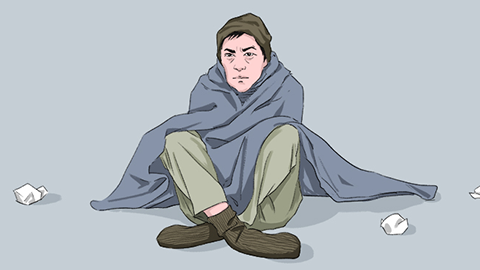What causes colds in autumn and winter, and what should be done?
Generally, colds during autumn and winter may be caused by factors such as temperature changes, dry air, influenza, acute tonsillitis, bronchitis, and other reasons. Treatment can be administered under a doctor's guidance through general treatments and medication. If symptoms persist or worsen, timely medical attention is recommended. The specific analysis is as follows:

1. Temperature Changes
Autumn and winter often involve significant temperature fluctuations, making it difficult for the body to adapt quickly. Sudden exposure to cold causes blood vessels on the body surface to contract, slowing blood circulation and reducing local resistance in areas such as the nasal passages and throat, thus triggering cold symptoms. One should adjust clothing according to temperature changes and add outerwear appropriately when there is a large temperature difference between morning and evening.
2. Dry Air
Autumn and winter air typically has low humidity. Dry air causes respiratory mucous membranes to lose moisture, making them fragile and weakening their defense functions, allowing pathogens to more easily invade the body and cause colds. In daily life, placing a basin of water indoors can increase humidity through natural evaporation.
3. Influenza
Influenza is caused by the influenza virus, such as type A or type B viruses. The virus mainly spreads through droplets. Once it enters the body, it rapidly replicates within respiratory epithelial cells, triggering a systemic inflammatory response that leads to cold symptoms. Common symptoms such as coughing, runny nose, and nasal congestion may also appear. Patients should use medications like oseltamivir phosphate granules, baloxavir marboxil tablets, and paracetamol tablets under a doctor's guidance to alleviate symptoms.
4. Acute Tonsillitis
Acute tonsillitis is mostly caused by infection with group B hemolytic streptococcus, although it can also be caused by bacteria such as Staphylococcus and Streptococcus pneumoniae. When these bacteria enter the body, they multiply extensively within the tonsillar crypts, causing inflammation of the tonsils. This inflammation irritates surrounding tissues, leading to throat pain and symptoms similar to those of a cold. Symptoms may include difficulty swallowing, fever, and a sensation of a foreign body in the throat. Patients can use medications such as amoxicillin capsules, cefixime granules, and ibuprofen suspension drops under a doctor's guidance to relieve symptoms.
5. Bronchitis
Bronchitis is often caused by viral infections or chemical irritants. Infection or irritation leads to inflammation of the bronchial mucosa, increasing bronchial secretions and causing airway obstruction. As the inflammation progresses, it may affect the upper respiratory tract, resulting in symptoms similar to those of a cold, such as nasal congestion and runny nose. Patients may also experience wheezing, shortness of breath, and pain. Patients can use medications such as azithromycin for oral suspension, levofloxacin tablets, and ambroxol oral solution as advised by a doctor for treatment.
In daily life, individuals should strengthen physical exercise to enhance their immunity. Additionally, during peak flu season, it is advisable to avoid crowded places as much as possible.







